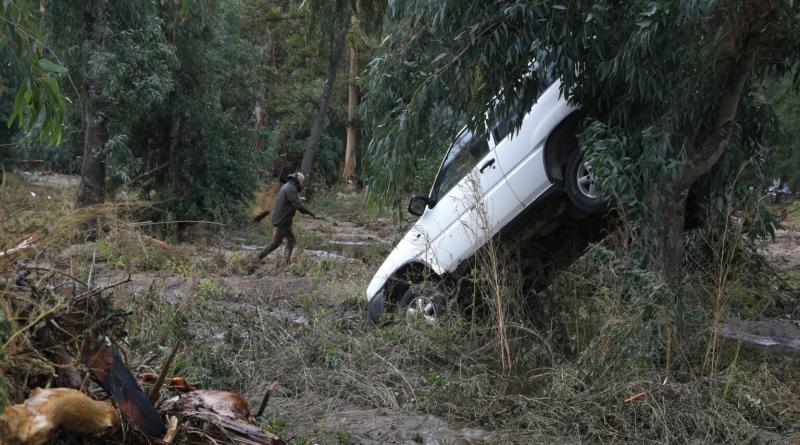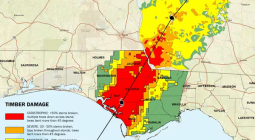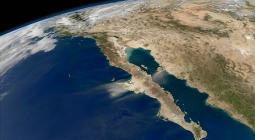Similar to Mexico’s Hurricane Otis, Storm Ciarán Took Europe by Surprise

Climate attribution is tricky. But a growing body of evidence suggests climate disasters are cropping up in unexpected places where such severe weather was thought to be rare.
At least 14 people are dead and millions remain without power as of Friday afternoon after a bomb cyclone whipped through much of western Europe in what may be yet another sign of climate change not only driving up the severity of extreme weather, but also pushing them into places that aren’t accustomed to such harsh conditions.
Storm Ciarán on Thursday brought hurricane-strength winds and torrential rain to France, the Channel Islands and southern England, shattering windows, tearing roofs off homes and forcing hundreds of schools to close. By Friday morning, much of Italy’s Tuscany region was inundated. The floods swept away cars, trapped drivers in underpasses and forced people to climb onto the roofs of their homes to escape the deluge.
Among the dead was a five-year-old child struck by a falling tree in Belgium and an 85-year-old man found dead on the ground floor of his flooded home in Italy. The storm broke several records, including in France, which saw sustained winds of 75 miles per hour and gusts of more than 124 miles per hour, according to the country’s meteorological agency Meteo-France.
Without a proper attribution study, it’s difficult to determine whether climate change had any real influence over a single storm, wildfire or heat wave. Still, scientists say that global warming is generally making extreme weather events more severe and long-lived, with weather disaster seasons starting earlier in the year and ending later. In the case of storms like Ciarán, they’re being supercharged by warmer oceans and can hold more water because of warmer air, which translates to stronger winds and more rain.
“There are a lot of attribution studies and other lines of evidence showing that autumn/winter storms like this are more damaging because of climate change,” Friederike Otto, senior lecturer in climate science at the Grantham Institute, Imperial College London, said in an interview with CNN about Ciarán. “The rainfall associated with these types of storms is more severe due to climate change, and the storm surges are higher and thus more damaging due to the higher sea levels.”
There’s also a growing body of evidence that suggests natural disasters are cropping up in unexpected places, where—at least in modern history—such extreme weather was thought to be especially rare. In fact, Ciarán comes just weeks after northern England was slammed by flash floods and powerful winds from Storm Babet, which killed at least seven people.
Just last week, Hurricane Otis surprised many residents and tourists near Acapulco, a popular resort town on Mexico’s western shore, when it made landfall as a catastrophic Category 5 storm. It was the first storm on record to hit the region at that strength, bringing devastating winds of up to 165 miles per hour. At least 48 people have been confirmed dead and at least 36 are still missing, among them 11 Americans.
People in the famous party town were so unprepared, an untold number of fishermen and boat crews were still out at sea, ABC News reported, and they are now among those missing. That’s in large part because of how quickly Otis grew in strength, siphoning energy from the warm ocean waters of the Pacific.
“Because the storm intensified so quickly, with wind speeds increasing by 115 mph within 24 hours, the more than one million people living in and around the city had very little time to prepare for the monster storm ahead of landfall,” the National Oceanic and Atmospheric Administration said this week in a report.
The autumn storms add to a record-breaking year for natural disasters. This summer in particular was marked by sweltering heat waves, torrential rainfall and raging wildfires that shook communities around the globe at a dizzying pace. In August, a massive wildfire in Hawaii killed at least 99 people and razed an entire town. And in July, torrential rain and flash floods contributed to dozens—if not hundreds—of deaths in India, South Korea, China and in the U.S. Northeast.
Among those killed was Katheryn Seleym, a 32-year-old Pennsylvanian mother, and her 2-year-old daughter Matilda Sheils, who were caught by a flash flood while driving. Authorities never found Seleym’s 9-month-old son, Conrad Sheils, and he’s presumed dead.
Photo by Pascal POCHARD-CASABIANCA / AFP) (Photo by PASCAL POCHARD-CASABIANCA/AFP via Getty Images





